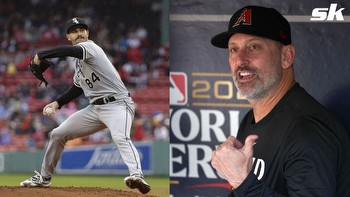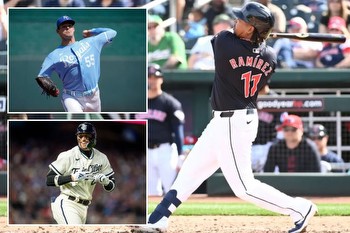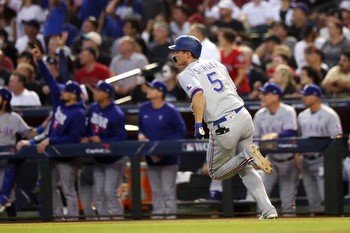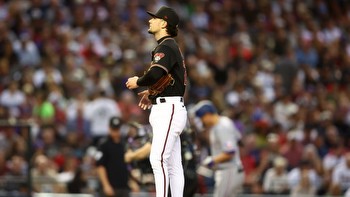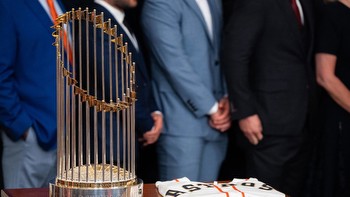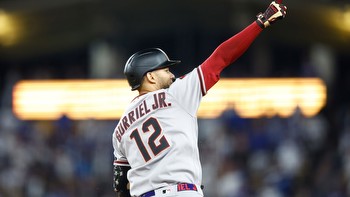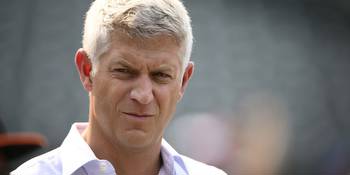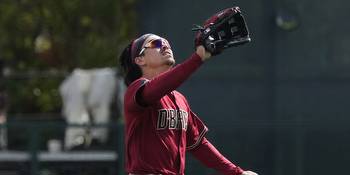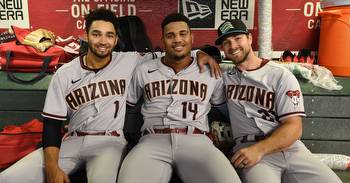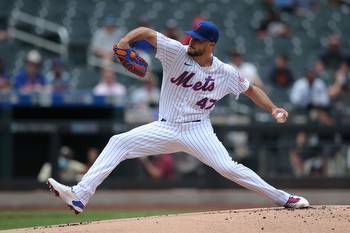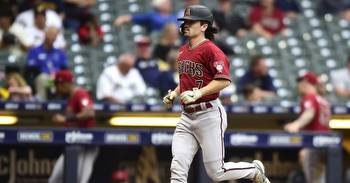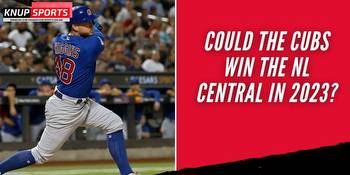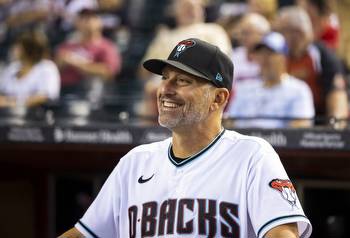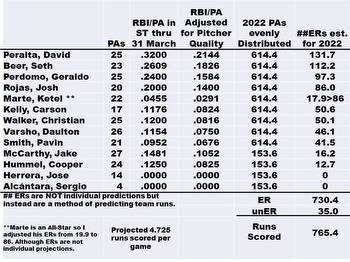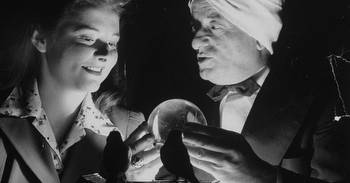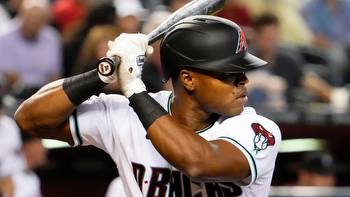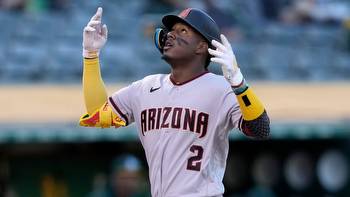A Different Diamondbacks’ Offseason Report Card
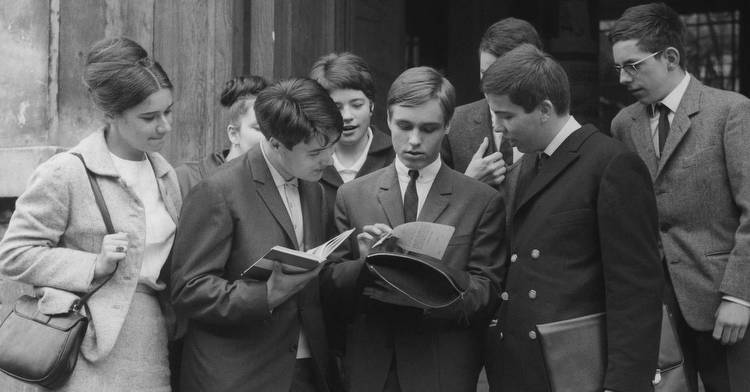
First, please let me explain why this is a different report card. Although James Attwood’s report card was articulate and well explained, my inner thoughts screamed at me, “I see it differently!” My perspective differs in fundamental ways and it differs in evaluation of specific players. Therefore, what follows is my different report card.
In general, my grades will be based on the question, “Did the team improve?” For those who like detail, my scoring rationale for each grade is at the bottom of my article.
What were the intangible improvements?
Let’s look at three intangibles - sustainability, retained player improvement, and retained coaches.
Two acquisitions improved team sustainability.
It speaks well of sustainability that the Diamondbacks have a trend of increasing pre-arbitration players.
In the offseason, sustainability was improved by a trade that acquired pre-arbitration player Gabriel Moreno. Gabriel Moreno was Baseball America’s number 1 prospect in July of 2022. He has a bright future that transforms a Diamondbacks need for a future catcher into an area of strength.
Evan Longoria signed as free agent. On one level, he will help the team as the right-handed bat in a platoon at third base, and as a designated hitter.
“I love the optimistic and inspiring things he said at his press conference. My intuition is that his role is a player/coach.” — Makakilo, 8 January Roundtable.
On a higher level, he will add to the teams sustainability by his leadership having a very positive impact on young players, such as Corbin Carroll and Alek Thomas.
“He is a good baseball player. His leadership ability is going to be probably more counted on, and his DNA is going to be all over this organization. Not only for this year. If he plays with us next year, and the year after, in ten years he’s going to have a blueprint and going to have some DNA all over Corbin Carroll, all over Alek Thomas. So we are super excited about it.” — Torey Lovullo
Retained two improvements from the second half of last season. Preserving players responsible for those gains, although it may be lack of action, is worthy of positive credit. Areas of improvement were defense and batting.
Defense: This season, after a slow start, the Diamondbacks defense steadily improved during the season! The Diamondbacks ranking in overall defensive DRS (for the season) increased from 20th at All-Star break, to 14th on 24 July, to 11th on 12 August, to 9th on 2 September (Data from The Fielding Bible).
Batting: Let’s compare some batting statistics before and after the All-Star Break. Their 8.0% improvement in hits per plate appearance was huge. In case you wondered as I did, without Daulton Varsho the improvement in hits per plate appearance would have been 8.6%.
If that 8.0% improvement had been for the entire season, their ranking in hits per PA would have improved from 27th in the Majors to 17th in the Majors. The following table shows a few improvements in batting statistics.
Retained coaches. An easily overlooked intangible was retention of Torey Lovullo, Brent Strom, Joe Mather, and others on the coaching staff. This intangible is a huge positive for three reasons:
- Their performances were exceptional.
- They know how to leverage the fairly new organizational system that facilitaes effective coaching of players as they move back and forth between the minors and the Majors.
- The low turnover avoids learning curve / norm forming that can be disruptive to peak performance.
One loss of note was Luis “Pipe” Urueta, who left for a bench coach position with the Marlins. That led a new hire: Rolando Valles, who previously was assistant coach with the Reds.
“He [Rolando Valles] has a pitching background, but was more centered towards the hitting side of things with the Reds. He had a lot of good concepts that he learned and picked up. But he’s a pitcher at heart. He’s going to be part of our run prevention team inside of our clubhouse.” — Torey Lovullo
INTANGIBLES: GRADE A
Rotation.
The Diamondbacks did nothing to improve their rotation. They re-signed Zach Davies, instead of acquiring a better pitcher to take his place. Only one newly promoted pitcher needs to be added to the rotation lowering the risk that a non-ready pitcher will pitch the entire season. Nevertheless, Torey Lovullo recently praised his young pitchers who are nearly ready.
“ We have a strong group of young pitchers underneath them that are ready to go out and compete for a roster spot.” — Tory Lovullo
The rotation was arguably average. Certainly it was not their biggest weakness demanding attention. Three basic reasons:
- For the full season, their 52-game average game score ranked in a tie for ranking 14th – 17th in the Majors. (Data from Baseball Reference.)
- For the full season their average of 5.4 innings per games was slightly above the 5.2 average in the Majors. (Data from Baseball Reference.)
- After the All-Star break their starting-pitcher wOBA of .305 ranked 15th best in the Majors. (Data from Baseball Savant.)
One sign of a potential strength for next season was that after the All-Star break their .263 OBP was the ninth best in the Majors. Keeping OBP low to prevent built innings is a key to winning games.
ROTATION: GRADE C
Bullpen.
Often, the first and most important step is clearly seeing the underlying problem. Here it is:387 strikeouts in the 7th inning and beyond ranked last in Majors!
(Data from Baseball Savant)
Addressing that underlying problem appears to be a goal of the Diamondbacks’ offseason. They rebuilt the bullpen. Their approach was different than prior years in two ways:
- This year they added power pitchers with stuff (strikeouts per PA, whiffs per pitch, and less balls in play per strike). Details about exactly what is meant by those statistics is in this AZ Snake Pit article.
- This year they added depth in the minors. That depth is important as a source to promote in case of injury. And importantly, some of the depth pitchers have exciting potential for performance breakthrough. In past seasons, my [imperfect] memory is that one or two minors pitchers had exciting potential. This season has several minors pitchers with exciting potential, which is much more awesome!
Four newly acquired pitchers who are likely to start the season in the bullpen (albeit that reliever volatility makes expectations subject to change). The following table provides statistics that show pitching power. Andrew Chafin and Scott McGough excelled in strikeouts per batter faced (SO/BF). Andrew Chafin and Cole Sulser excelled in Whiffs per pitch (Whiff/pitch). Cole Sulser excelled in least balls-in-play including homer runs per strike (BIP/Strike).
Although about three dozen pitchers were acquired during this offseason (so far) my view is that the following pitchers have great potential, albeit they will likely start the season in the minors. Several of these power pitchers have nearly mastered pitch control needed to become a dominate reliever. What differentiates Carlos Vargas from the others is that Fangraphs’ Roster Resource shows him on the 40-man roster. The following table provides some statistics that show power pitching.
I feel confident that strikeouts will increase with the rebuilt bullpen. Hopefully with that improvement, other statistics will improve commensurately. Also, the odds are that at least one of the power pitchers in the minors will have a breakout season.
BULLPEN: GRADE B+
Roster Flexibility to Address Left Handed Pitchers.
The Diamondbacks acquired three right-handed batters that will improve the team’s batting against left-handed pitchers.
Evan Longoria. He will play in a third base platoon and DH against left-handed pitchers. In 2008 he was voted rookie of the year. Early in his career, he was awarded three gold gloves and one silver slugger. In the last two seasons his OPS+ was above average.
Lourdes Gurriel Jr.. He will play in a left field platoon and DH against left-handed pitchers. In the last two seasons, his defense at left field was very good (total of 9 DRS in left field), albeit perhaps his defense falls short of Daulton Varsho’s defense. His assists as a left fielder was in the top ten in each of the last four seasons. His OPS+ was above average in each of the last 5 seasons.
Lourdes Gurriel Jr. felt good about possibilities for the Diamondbacks to play in the post-season because of the combination of young talent and the experience of veteran presence. MLB video, January 2023
Kyle Lewis. He will DH against left-handed pitchers. In 2016, he was a first round draft pick. In 2020, he was voted rookie of the year. Prior to last season, his OPS+ was above average every season.
He is a bounce back candidate. Last season he missed playing time due to a concussion caused by being hit by a pitch on 29 May. In May his OPS was .979. For the remainder of the season his OPS was .366. Hopefully he will bounce back to 100% this season.
“ He’s a good fit for us, we’re taking a shot at some upside here. He has the power potential, he’s gotten on base when healthy. We feel like this is a good opportunity for us to acquire some potential impact.” — Torey Lovullo
Because of knee injuries, his sprint speed is at the second percentile (one of the slowest in the Majors). My view is he will exclusively play DH, except for emergencies.
The following table shows that these three acquisitions will increase the hits per PA against left-handed pitchers.
Roster composition and flexibility will be stronger this season. This strength will result in better batting against left-handed pitchers.
ROSTER FLEXIBILIY: GRADE B
Summary.
I am highly confident that the offseason moves improved the Diamondbacks. My overall grade is a B. That overall grade was supported by the following:
- A for intangible improvements.
- C for rotation improvements.
- B+ for bullpen improvements.
- B for improved roster flexibility against left-handed pitchers.
Scoring Guide:
In general, my grades will be based on how did the team improve. My scoring rationales for each grade follow:
- A. Huge improvement. Examples are filled a position of great need and made it a strength, acquired an All-Star player, made a move will make a big positive impact beyond what was reasonably imagined.
- B. Improvement. Next season’s wins will likely be higher. The ceiling on season wins is higher because young talented players will return and because added players might perform better than expected. The floor on season wins is higher because added depth. Sustainability was increased by more pre-arb players and/or contract extensions.
- C. Same level as last season. In general, the team replaced lost players with equivalent players. Possible upsides were balanced by possible downsides.
- D. Team will likely be worse. Players who left were not replaced, or were replaced by lesser players. Trades may have lowered next season’s performance while adding long term prospects. Financial savings were realized at the cost of fielding a worse team. Performance risks for next season were increased.
- F. The biggest needs and weaknesses were not addressed in any meaningful way. Losses were not addressed in any meaningful way. Free agent signings were expensive and may not improve the team. The offseason was best characterized by lost opportunities and lack of positive moves.

